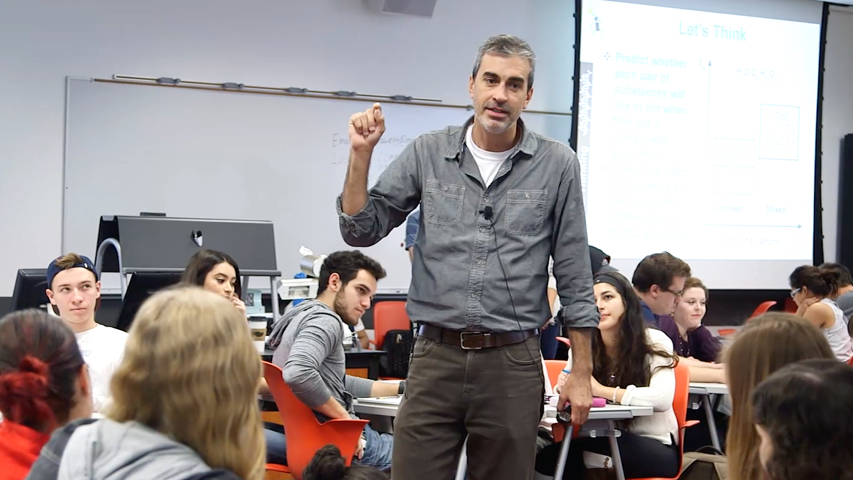
Realizing a “New Normal” of Evidence-Based Instruction
In a provocative new report, AAU President Mary Sue Coleman calls for a “new normal” in which “all faculty members will both use and be rewarded for using evidence-based approaches to instruction.” In the paper—a progress update on AAU’s Undergraduate STEM Education Initiative—Coleman calls for quality instruction, noting “we cannot condone poor teaching of introductory STEM courses because we are trying to weed out the weaker students in the class or simply because a professor, department, or institution fails to recognize and accept that there are, in fact, more effective ways to teach.”
Acknowledging the increased responsibility carried today by colleges and universities, Coleman asserts that “failing to implement evidence-based teaching practices . . . must be viewed as irresponsible, an abrogation of fulfilling our collective mission to ensure that all students . . . are provided with the maximum opportunity to succeed.”
Launched in 2011, AAU’s Undergraduate STEM Education Initiative aims to “influence the culture of STEM departments at AAU institutions so that faculty members are encouraged and supported to use teaching practices proven by research to be effective in engaging students in STEM education and in helping students learn.” Over 30 institutions are active in AAU’s STEM Network. Eight were selected as project sites, and more than 450 faculty members have participated in the initiative. Project sites have reported learning gains, decreased failure rates, improved persistence, and narrowing achievement gaps, providing yet more evidence that effective teaching matters.
AAU’s leadership represents a candid, and courageous, admission that even the most distinguished universities must, and can, do better. But with the majority of the nation’s undergraduates enrolled in colleges and universities that are not AAU members—and with 1.5 million educators in STEM and other fields—we are left with a question of scale. The report advocates finding ways to “spread the use” of research-based approaches.
Heeding the call, ACUE answered the question head on. ACUE worked closely with faculty members at The University of Arizona and The University of North Carolina at Chapel Hill, two AAU project sites, to document their extraordinary use of evidence-based teaching approaches. ACUE’s Course in Effective Teaching Practices includes video demonstrations from inside of John Pollard’s chemistry class, Zoë Cohen’s physiology class, Paul Blowers’s engineering class, Roger Miesfeld’s chemistry class, Kelly Hogan’s biology class, Thomas Freeman’s chemistry class, and Viji Sathy’s neuroscience class. As a result, ACUE-credentialed faculty have had the opportunity to learn about—and implement—the proven approaches identified through AAU’s important project.
We know that identifying evidence-based practices is just the start. As Coleman shares, we must provide “faculty members with the encouragement, training, and support to effectively employ these instructional approaches.” Nothing less than a systematic commitment to great teaching is “needed to ensure that we have the STEM-literate workforce and general population required to propel the nation forward into the 21st century and beyond.”
